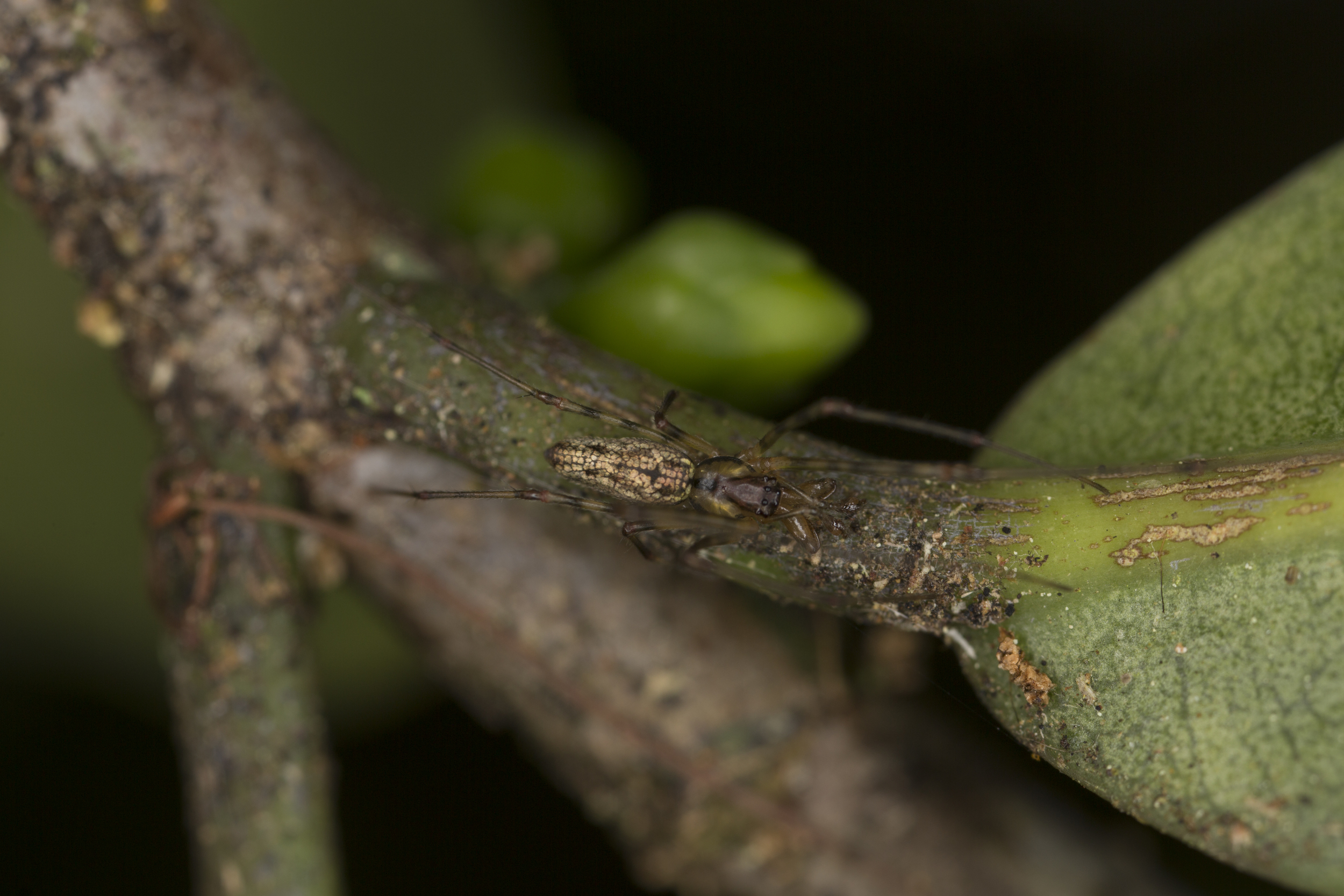A few weeks later, I received a call from Kerri Fay, director of TNC on Maui, asking if I would like to accompany a spider researcher into Waikamoi. Well, yeah, of course! What Kerri failed to mention was that Susan Kennedy, a doctorate student at UC Berkeley, did her research on spiders, or more precisely, spider webs, at night. That’s how I came to find myself hiking deep into the preserve early one evening and hiking out again at 3am, and that's also when I made a fascinating and unexpected discovery.
During the day, the remarkable beauty of the Waikamoi Preserve is unmistakable. Remote and tropical, it is filled with striking images of sunlight filtering through the trees, lush plants, and the ceaseless chatter of the brilliantly red Apapane.
At night, however, Waikamoi was a bit eerie, and hiking through it was a very different experience. Certain spiders that live within the preserve are nocturnal and these were the focus of Susan’s doctorate thesis. While Susan was documenting webs, I was able to collect the actual spiders to photograph.
Susan Kennedy in Waikamoi
If I thought setting up a studio during the day in Waikamoi was challenging, it was nothing compared to setting one up at night. The only advantage was the presence of a narrow boardwalk that served as a sort of home base. I also brought with me a much better tarp and aforementioned waterproof pants and jacket – all of which proved to be much needed.
The biggest challenge was in photographing the subjects themselves. Finding subjects is always difficult but after awhile, I began to learn where to look and developed an eye for movement. However, nocturnal insects possess a surprising amount of energy at night and getting them to cooperate with my attempts at photographing them was like nailing jello to a tree. There began a kind of insect rodeo: capture an insect, place it on the plexiglass tray, try to convince it to hold still, snap away, watch as insect hops/skips/scurries/flies off, retrieve insect or find another one, begin again.
When it started to pour and the temperature dropped significantly, causing my fingers to stiffen with cold, it became even more difficult and I was beginning to seriously question sanity.
Why was I in the middle of a jungle in the middle of the night purposely looking for creepy crawly things to photograph and why did I ever think this would be a good idea?
It was during one of these forays into Waikamoi that I discovered a truly remarkable spider. The Tetragnatha spider, sometimes referred to as a stretch spider, or long jawed orb weaver is a genus of spiders containing hundreds of species. They are found all over the world, although most occur in the tropics and subtropics. While generally no more than 1-2cm in length, they have especially long, spiny legs and their abdomens are comprised of shiny and metallic looking geometric shapes.
There are several members of the Tetragnatha family that are endemic to Hawaii and some of these reside in the Waikamoi Preserve. They are all nocturnal in nature and most active after complete darkness until dawn. During the day they remain camouflaged by stretching out and lying flat amongst plants that match their color, making them especially difficult to find.
It was after midnight and I’d managed to find a few Tetragnatha specimens that I’d carefully placed into small containers. I brought one out to photograph and while getting in close with my macro lens I noticed what looked like some movement in its abdominal area. I thought at first it was the heart beating but wasn’t sure. I took a quick video and when I examined it the next day at home I could see that each individual geometric shape was fluctuating and, remarkably, changing color!
I sent the video off to Susan Kennedy who then sent it on to Rosemary Gillespie, Professor & Schlinger Chair in Systematic Entomology, University of California, Berkeley and Past President of the American Arachnological Society. They were both very interested and indicated that this was a phenomena they were aware of but had never seen. Rosemary then sent the video on to Geoff Oxford, Professor of Biology, University of York, UK, and another spider specialist who has studied this phenomenon. Apparently, this particular Tetragnatha is capable of what is referred to as Rapid Color Change, using the same physiological process that a chameleon does!
The following is an excerpt from a research paper sent to me by Geoff Oxford. The authors, Judith Wunderlin and Christian Kropf, explain the process as follows:
“Physiological colour change is generally enabled by movements of pigment granules within cells or by modifications of the morphology of the pigment- containing cells. When pigment granules move within chromatophores, they either disperse or concentrate. These spiders show mostly a white or at least light opisthosomal pattern, made up by specialized midgut cells beneath the hypodermis, the so-called guanocytes. These cells store the excretory product guanine that appears white and acts as a colourant. In all reported cases of rapid colour change in spiders, the white guanine markings on the opisthosomal surface diminish in size or disappear more or less completely. As a consequence, the general colouration of the spider’s opisthosoma changes to the darker or greyish brown of the digestive mass.”
I made this discovery near the end of that summer and quality of the footage, while fascinating, was inadequate in really showing this process. It was, therefore, with some reluctance that I packed up my gear and headed back to RIT for my final year. Through the winter I continued to think about the spider and was determined to obtain more footage.













